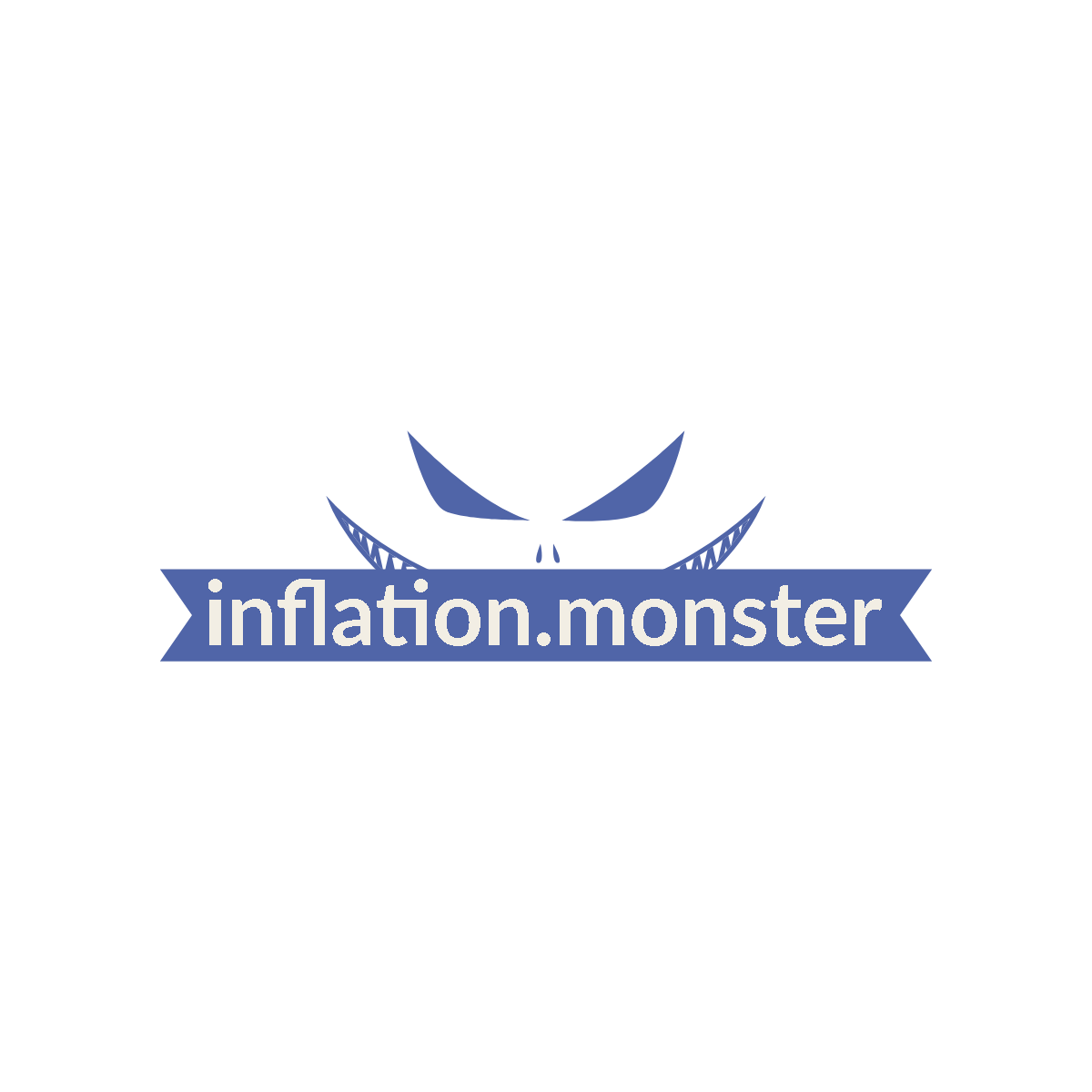Inflation has always been seen as a formidable creature lurking in the shadows of the economy, ready to pounce and disrupt our financial well-being. But in the age of e-commerce, it seems that this beast has taken on a new form. As the world continues to move towards a digital marketplace, we find ourselves witnessing a fascinating evolution where inflation not only impacts the prices we pay, but also redefines the way we shop. Join us as we explore the intricate relationship between inflation and the ever-changing landscape of e-commerce, uncovering how this monster continues to shape our shopping habits and the future of the economy.
Inflation and the Evolution of E-commerce
1. Introduction to Inflation and E-commerce
In today’s fast-paced and interconnected world, two significant forces have been shaping the global economy: inflation and e-commerce. Understanding the relationship between these two is crucial for businesses and consumers alike. In this article, we will explore the impact of inflation on e-commerce and how e-commerce is adapting to mitigate the effects of inflation.
2. Understanding Inflation
2.1 Definition of Inflation
Inflation refers to the sustained increase in the general price level of goods and services in an economy over a specific time period. This means that, on average, prices are rising, and the purchasing power of money is decreasing. Inflation is typically measured using various indices such as the Consumer Price Index (CPI) or the Producer Price Index (PPI).
2.2 Causes of Inflation
Inflation can be caused by several factors, including excessive money supply, higher production costs, changes in consumer spending habits, and government policies. When the demand for goods and services surpasses their supply, prices tend to rise. Similarly, when the cost of inputs for production, such as labor or raw materials, increases, it can lead to higher prices for the final products.
2.3 Effects of Inflation
The effects of inflation are far-reaching and can impact various aspects of the economy. One key effect is the erosion of purchasing power. As prices rise, consumers may find that their income doesn’t stretch as far, and they are unable to afford the same quantity or quality of goods and services. Additionally, inflation can destabilize financial markets, create uncertainty for businesses, and distort the allocation of resources.

3. Introduction to E-commerce
3.1 Definition of E-commerce
E-commerce, or electronic commerce, refers to the buying and selling of goods and services over the internet. It encompasses a wide range of activities, from online retail stores to online banking and digital marketplaces. E-commerce has grown exponentially in recent years, driven by technological advancements and the increasing preference for online shopping.
3.2 Advantages of E-commerce
E-commerce offers several advantages over traditional brick-and-mortar retail. One major advantage is convenience. With e-commerce, consumers can shop from the comfort of their homes, at any time of the day or night. This eliminates the need to travel to physical stores and provides access to a vast range of products from around the world. Additionally, e-commerce often offers competitive prices, as online retailers can save on overhead costs compared to offline stores.
3.3 Disadvantages of E-commerce
While e-commerce has its benefits, it also presents some challenges. One disadvantage is the lack of physical interaction and the inability to see or touch products before purchase. This can make it difficult for consumers to assess the quality or authenticity of products, leading to potential dissatisfaction. Additionally, e-commerce is susceptible to issues such as data breaches, online scams, and delayed deliveries, which can undermine consumer trust and confidence.
4. The Impact of Inflation on E-commerce
4.1 Cost of Goods and Services
Inflation affects the cost of goods and services, impacting both e-commerce businesses and consumers. As the prices of inputs, such as raw materials or transportation, rise, e-commerce businesses may face higher production costs. This can lead to the need for price adjustments, potentially impacting profit margins and competitiveness. Similarly, consumers may experience higher prices for online purchases, reducing their purchasing power and altering their buying behavior.
4.2 Consumer Behavior
Inflation can significantly influence consumer behavior in the e-commerce space. As prices rise, consumers may become more price-sensitive and seek out the best deals and discounts. This can lead to increased price comparison among online retailers and a greater emphasis on value for money. E-commerce businesses need to understand these changing consumer preferences and adapt their marketing and pricing strategies accordingly.
4.3 Business Operations
Inflation can also impact the operational aspects of e-commerce businesses. Rising costs, particularly in areas such as logistics or fulfillment, can squeeze profit margins and require adjustments in supply chain management. Additionally, fluctuating exchange rates can affect the cost of importing or exporting goods, impacting international e-commerce operations. E-commerce businesses need to closely monitor and manage these operational challenges to remain competitive in an inflationary environment.

5. Strategies for E-commerce Businesses to Combat Inflation
5.1 Pricing Strategies
To navigate the impact of inflation, e-commerce businesses can employ various pricing strategies. Dynamic pricing, where prices fluctuate based on factors like demand and supply, can help businesses optimize revenue and respond quickly to changing market conditions. Additionally, offering discounts or promotions on select products can attract price-conscious consumers while maintaining overall profitability.
5.2 Supply Chain Management
Efficient supply chain management is crucial for e-commerce businesses to mitigate the effects of inflation. By streamlining processes, optimizing inventory levels, and partnering with reliable suppliers, businesses can reduce costs and enhance operational efficiency. Adopting technologies such as inventory management systems or demand forecasting tools can enable better inventory planning and reduce the risk of stockouts or excess inventory.
5.3 Customer Retention
Building and maintaining customer loyalty is essential for e-commerce businesses facing inflationary pressures. Providing excellent customer service, personalized experiences, and loyalty programs can help businesses retain customers who may be tempted to switch to lower-priced competitors. E-commerce businesses can also focus on post-purchase engagement, such as follow-up emails, to ensure customer satisfaction and encourage repeat purchases.
6. The Role of E-commerce in Mitigating the Effects of Inflation
6.1 Competitive Pricing
One of the strengths of e-commerce in an inflationary environment is its ability to offer competitive pricing. With lower overhead costs compared to physical stores, online retailers can often provide products at more affordable prices. This enables consumers to maximize their purchasing power and find better deals, mitigating the impact of inflation on their budgets.
6.2 Accessibility and Convenience
E-commerce’s accessibility and convenience play a significant role in mitigating the effects of inflation. By eliminating the need for physical travel and allowing consumers to shop from anywhere, e-commerce saves time and effort. This convenience factor can not only offset some of the negative effects of inflation but also attract new customers who prioritize ease of shopping.
6.3 Innovation and Adaptability
Innovation and adaptability are key strengths of e-commerce in an inflationary environment. Online retailers can quickly adjust their product offerings, pricing strategies, and marketing campaigns in response to changing consumer demands or market conditions. This flexibility allows e-commerce businesses to stay ahead of the competition and adapt to the challenges posed by inflation.

7. Opportunities for E-commerce in an Inflationary Environment
7.1 Expanded Market Reach
In an inflationary environment, e-commerce presents an opportunity for businesses to expand their market reach. Online stores can target a global audience, breaking down geographical barriers and reaching customers in regions where inflation may be less severe. By tapping into new markets, e-commerce businesses can diversify their customer base and minimize the impact of local inflationary trends.
7.2 Diversification
E-commerce allows businesses to diversify their product offerings, reducing reliance on specific industries or sectors that may be more susceptible to inflation. By expanding into new product categories or introducing exclusive brands, e-commerce businesses can create a robust portfolio that offers resilience and adaptability in the face of inflationary pressures.
7.3 Expansion into New Product Categories
Inflationary environments often lead to shifts in consumer preferences and spending habits. E-commerce businesses can capitalize on these changes by expanding into new product categories that align with evolving consumer needs. By identifying emerging trends or niche markets, online retailers can position themselves as leaders in these areas and offer products that are in high demand, even in the midst of inflation.
8. Challenges for E-commerce in an Inflationary Environment
8.1 Rising Costs
One of the main challenges for e-commerce businesses in an inflationary environment is the rising costs of operations. Higher production costs, transportation expenses, or even digital advertising costs can squeeze profit margins and impact overall business sustainability. E-commerce businesses need to carefully assess and manage these cost pressures to maintain profitability and competitiveness.
8.2 Consumer Resistance
Inflation may lead to increased consumer resistance and reduced purchasing power. As prices rise, consumers may become more cautious about their spending and prioritize essential items over discretionary purchases. This can pose challenges for e-commerce businesses that rely on non-essential or luxury products. To overcome consumer resistance, businesses may need to reassess their target market, adjust pricing strategies, or diversify their product offerings.
8.3 Increased Competition
The e-commerce landscape has become highly competitive, with numerous players vying for customers’ attention and spending. In an inflationary environment, increased competition can further intensify pricing pressures and erode profit margins. E-commerce businesses need to differentiate themselves through unique value propositions, exceptional customer service, or niche market positioning to stand out from the competition and maintain a strong market position.
9. Case Studies: E-commerce Success Stories in an Inflationary Environment
9.1 Amazon
Amazon stands as one of the most prominent success stories in the e-commerce industry, navigating various inflationary environments. With its vast product range, competitive prices, and efficient logistics operations, Amazon has been able to attract and retain customers even during periods of inflation. The company’s focus on customer-centricity, innovation, and strategic partnerships has allowed it to thrive and adapt to changing market conditions.
9.2 Alibaba
Alibaba, the Chinese e-commerce giant, has also demonstrated resilience and success in an inflationary environment. By leveraging its extensive network of suppliers and adopting innovative technologies, Alibaba has been able to offer competitive prices and enhance the accessibility of its platforms. The company’s focus on serving the Chinese middle class, diversifying into new sectors, and expanding its digital ecosystem has positioned it as a leader in the e-commerce industry.
9.3 Flipkart
Flipkart, an Indian e-commerce company, has overcome the challenges of inflation and fierce competition in its domestic market. By prioritizing customer experience, investing in technology infrastructure, and forging strategic partnerships, Flipkart has built a loyal customer base. The company’s focus on affordability, value-added services, and localized offerings has allowed it to flourish, even in the face of inflationary pressures.
10. Conclusion
In conclusion, the relationship between inflation and e-commerce is complex and multi-faceted. As inflation impacts the cost of goods and services and alters consumer behavior, e-commerce businesses must adapt and implement strategies to mitigate its effects. Nonetheless, e-commerce offers unique advantages, such as competitive pricing, accessibility, and innovation, that can help businesses thrive in an inflationary environment. By leveraging these strengths and seizing opportunities for market expansion and diversification, e-commerce businesses can navigate the challenges and position themselves for success in the ever-evolving landscape of inflation and e-commerce.




